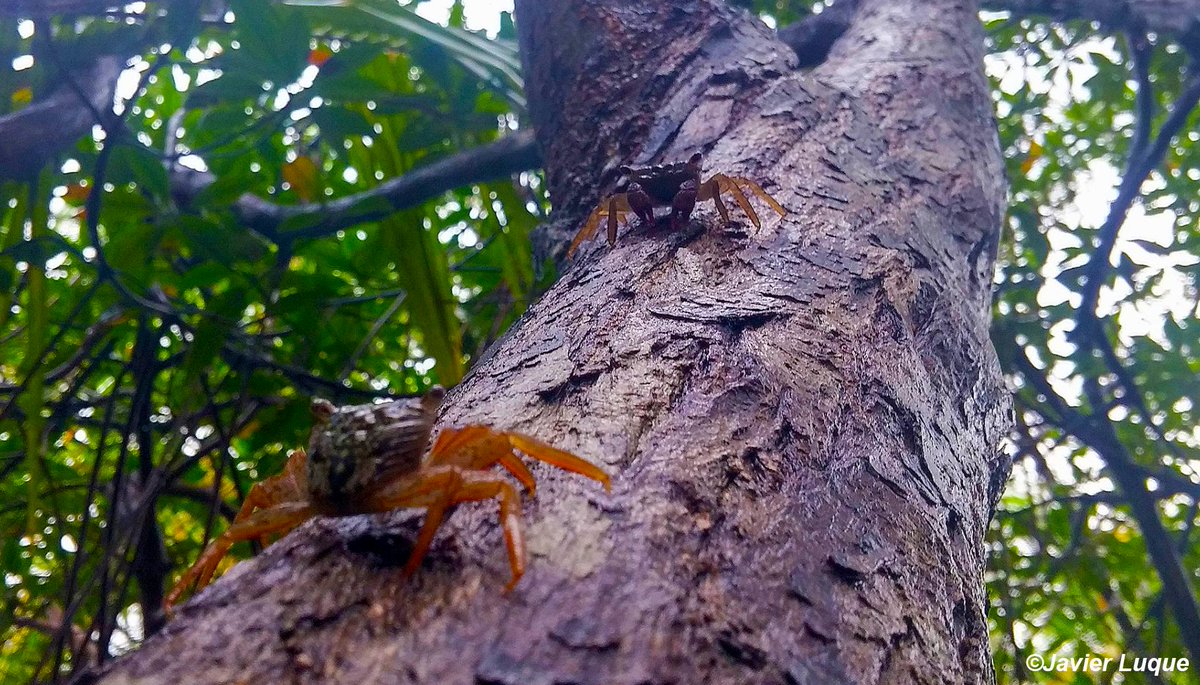
This tiny crab trapped in 100-million-year-old amber is the most complete fossil crab ever discovered! But how did a crab get trapped in amber in the first place? Here we tell you the story
science.org/doi/10.1126/sc… #Science #Evolution #SciComm 1/n
science.org/doi/10.1126/sc… #Science #Evolution #SciComm 1/n

Transitions from marine to non-marine environments (e.g., land, brackish & freshwater) are an infrequent even in most animal groups. And yet, true crabs, or #Brachyura, have done it independently over a dozen times! #ocean #freshwater #evolution 2/n 

Amber is like a time capsule that preserves organisms like frozen in time. While most fossils in amber are land-dwelling animals—principally insects—, aquatic organisms such as crabs are extremely rare! #amber #jurassicpark #Cretaceous #Crabs Photo by @LidaXing1982 3/n 

Cretapsara athanata, "the immortal Cretaceous spirit of the clouds and waters", honors the #Cretaceous Period & Apsara, a spirit of the clouds & waters in South & Southeast Asian #mythology. The species name, “athanatos”, means immortal, referring to its lifelike preservation 



Despite its small size (5mm from leg to leg) Cretapsara preserves in stunning detail the body, legs, claws, antennae, #eyes, and even mouthparts with tiny hairs! 🦀 #sciencetwitter #Time #Paleontropica science.org/doi/10.1126/sc… 4/n 

One of the most remarkable surprises of the new fossil discovery is the preservation of tiny gills in #3D , revealed via a microCT scan. Mind-blowing! 🤯 What can we learn from the exceptional preservation of this crab in amber? #VirtualPhotography #OA science.org/doi/suppl/10.1… 

Cretapsara (~100 Mya) bridges the gap between the molecular🧬 split of nonmarine crabs from their marine kins (~130 Mya) and their oldest known fossils (~75–50 Mya), and tells us that crabs have conquered land and freshwater more than 12 times independently! #Evolution #OA 7/n 

And here is a stunning #3D video #animation of tiny Cretapsara athanata that will blow your mind! Because every day is #CrabDay 🦀🙌 Click here👇 #SciComm #sciart #paleoart #InsertAnInvert #Science #nature #art @HarvardOEB @NSF @NSERC_CRSNG 8/n
Want to have your own 3D-printable model of Cretapsara athanata? Here you go! 🙌👇 science.org/doi/suppl/10.1…. Thanks to @LidaXing1982, @LizClarkPhD and everyone who made this project possible @HarvardOEB @yalepeabody @stri_panama @UofAResearch @NSF @NSERC_CRSNG. Art by @franzanth 

• • •
Missing some Tweet in this thread? You can try to
force a refresh



